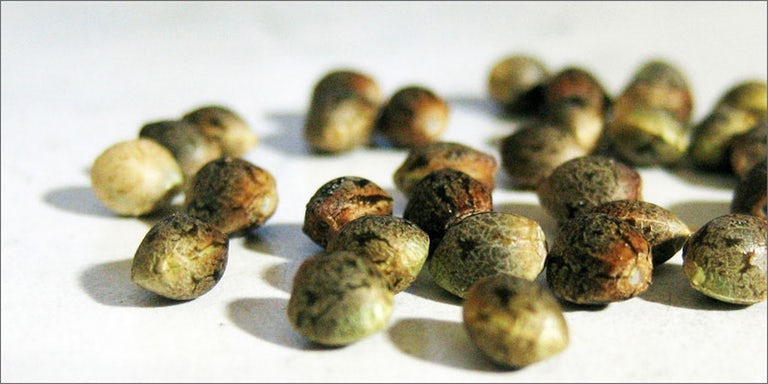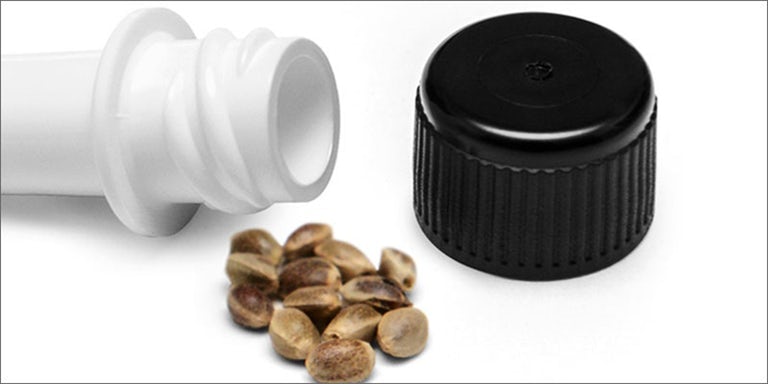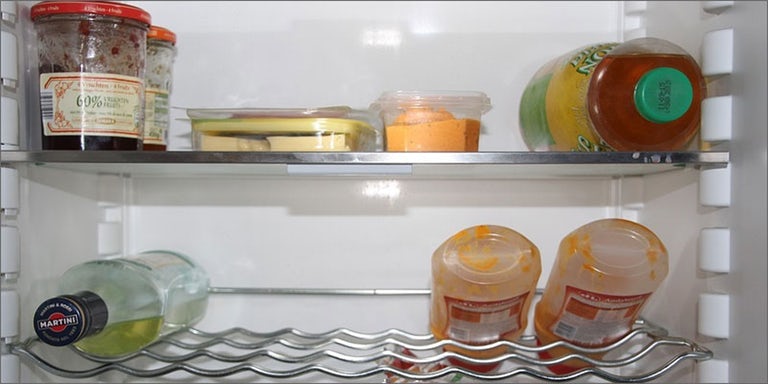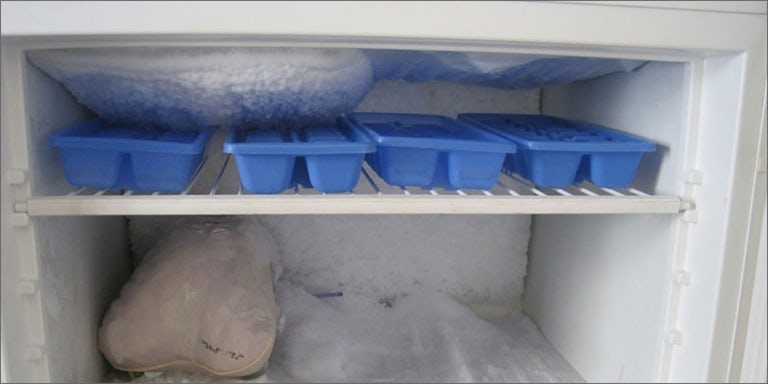Growing Cannabis Seeds: Here’s Everything You Need To Know | Herb
Written by Anna Wilcox
Starting cannabis from seed can be extremely rewarding. Not only do you get to take your plants through a complete growth cycle, but you might also get to produce some seeds of your own. With seeds, anyone can go from a cannabis enthusiast to an amateur breeder. You’ll be able to custom tailor your plants to meet your specific needs or possibly develop a new strain or two. To help you experience the wonders of seeds is this basic guide to growing cannabis seeds.
1. How to find and choose the right seeds
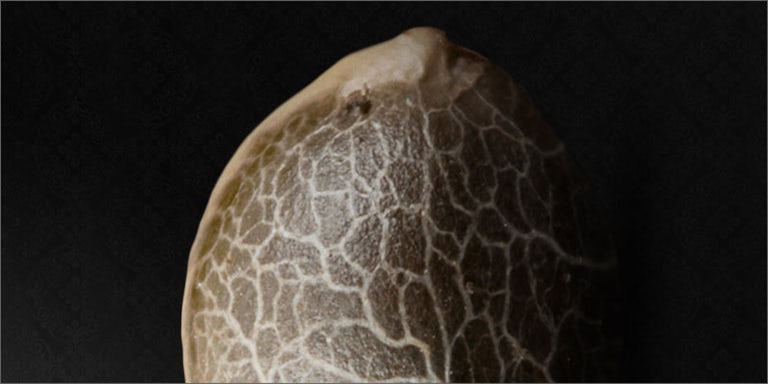
If you’re growing from a clone, it’s unlikely that your plant will produce seeds. Seeds develop after a male cannabis plant pollinates a female. Only female plants produce seeds. Yet, when you smoke cannabis, you’re typically smoking the unfertilized bud of the female flower. This can make it a bit difficult to actually find seeds if you’re interested in growing from scratch.
There are a couple of ways you can source your seeds. If you live in a legal medical or recreational state, ask your favorite dispensary for reputable local seed companies. Many people also order seeds from online seed banks. Though, this is illegal in the United States. Seeds for “souvenir purposes” are legal in many regions around the world, allowing many seedbanks to ship worldwide.
Though ordering seeds is illegal in the U.S. and you can face criminal charges, seed arrests are uncommon in comparison to arrests from growing or germinating plants. It’s not uncommon, however, to have your mail-ordered seeds confiscated by U.S. customs. If you order seeds from an international seed bank and they are found, you will get a letter in the mail saying that your seeds have been tossed out.
Finding seeds may be a little tricky, but choosing the right seeds to grow is easy. There are a few qualities that set good seeds apart. When you’re picking out your seeds, watch for these features:

In many places, cannabis becomes illegal once seeds begin to germinate. Germination is simply the process of getting your sprouting your seed to grow a plant. If you are able to safely germinate your seeds, there are a few ways to go about the process. Almost every grower has their preferred germination method, but here is a brief summary of the most popular techniques:
Pre-soak method
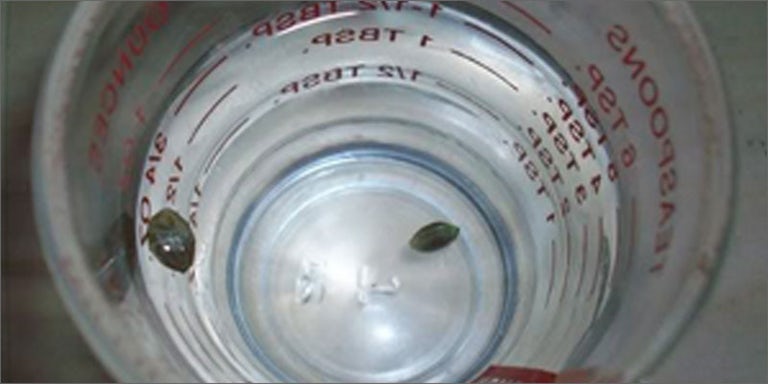
Basically, pre-soaking means that you soak your seed in warm (not too hot!) water until they sink to the bottom of your glass or container. The idea is that soaking your seeds speeds up the germination process by making sure that your seed is completely moist before planting.
Some people soak their seeds for up to seven days, or until a root appears. Though, the major concern here is that pre-soaking increases the risk of rot and mold before you’ve even fully started your plant.
Paper towel method
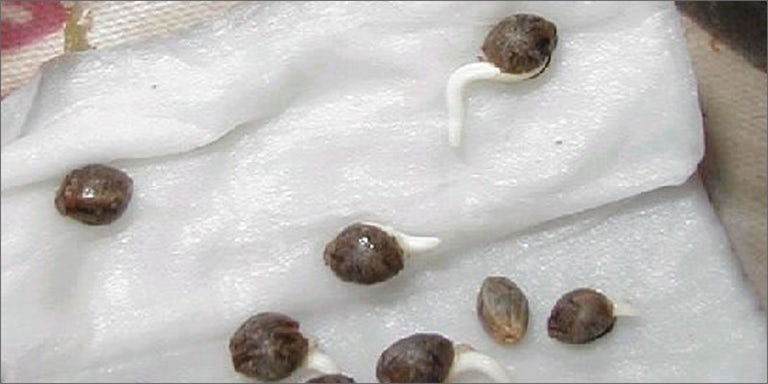
The paper towel method is one of the most popular germination methods out there. It takes a little longer than the pre-soak method, but there’s less of a risk of rot if you’re observant. You simply moisten a paper towel, fold it, place the seeds inside the fold, and then place the damp towel into a plastic baggie.
Keep the plastic baggie in a dark, warm place, but keep an eye on it so that it doesn’t mold. After a couple of days, a root will appear. You can then transfer the germinating seed into soil.
Direct soil method
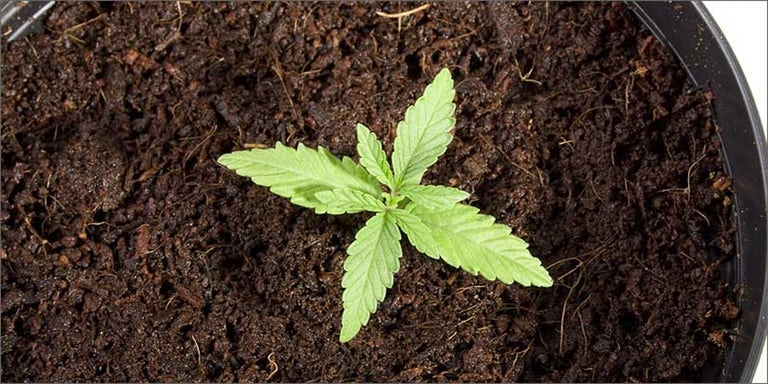
You can plop your seed directly into soil whether or not you’ve pre-moisten it in any way. Have a small container of prepared soil ready. Make a tiny, half-inch well in the soil. If you’ve pre-soaked your seeds, place the seed root-end down. If you’re starting with dry seed, place it pointed end down. Flick a tiny amount of soil back over the seed. Then moisten the soil with a sprayer or small amount of water.
If you started from a dry seed, cover the container with plastic wrap to create a greenhouse effect. Store your newly planted seed in a warm, dark place. After about 4 to 5 days, your seeds will sprout. At this point, move your seeds to a brighter, well-ventilated location and wait for them to get large enough to transplant.
3. How to sex your sprouts
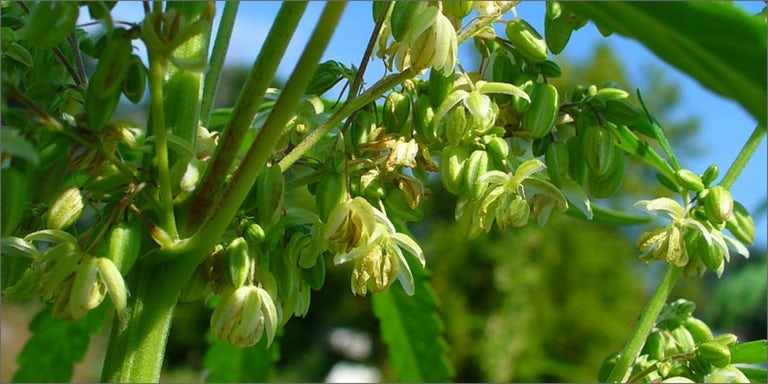
When your little plants reach about the 6-week mark, you’ll be able to tell their sex. If you’ve started from feminized seed, you won’t need to worry about this step. Feminized seeds only produce female cannabis plants, making them great options for folks who plant to just grow from clone after their initial start with seeds.
If you’re not growing from feminized seed, sexing your plants is one of the most important parts of the early growing process. In order to get a good harvest of usable cannabis flower, you’ll need to separate your male and female plants. If you do not separate your plants, you risk unwanted pollination.
When female plants are pollinated, they stop spending energy on developing potent buds. Rather, they spend energy developing seeds. Here’s a brief summary of what to look out for.
Females
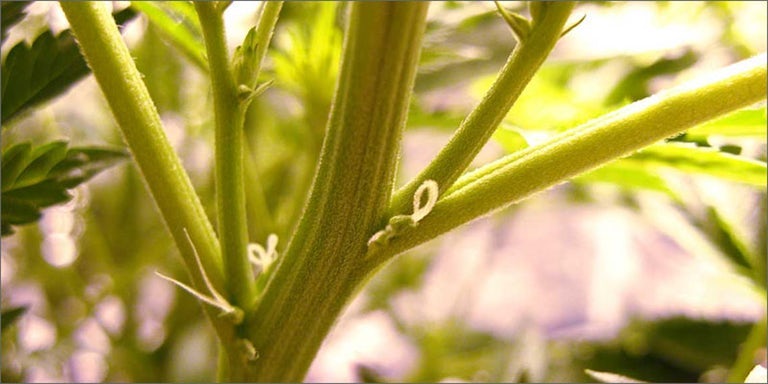
Cannabis sprouts will produce “preflowers”. These preflowers will be found in the crux between the main stalk and the branch. A sure-fire way to tell that your plant is female is to look for preflowers with long, white hairs. These white hairs are pistillate hairs, part of the female sex organ of the plant.
Males
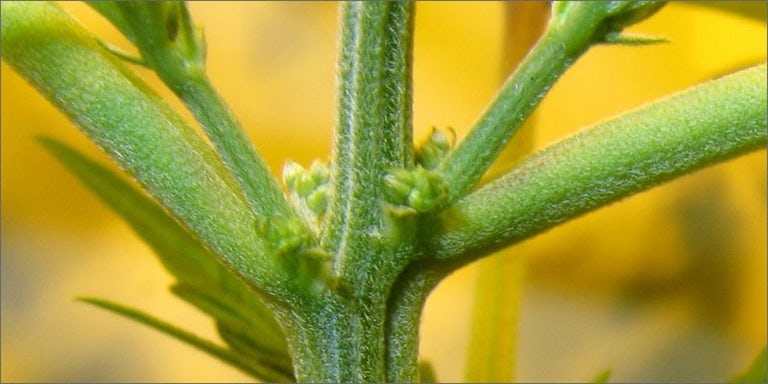
Male plants develop flowers, too. However, male flowers are markedly different than female flowers. While females produce a conical bud covered in long white hairs, male flowers look more like little bundles of downward facing tulip. These little bundles are pollen sacks. To spot a male, look for a small bud in the crux between a branch and the main stalk. This bud will be bulbous without any hairs.
Written by Anna Wilcox
Starting cannabis from seed can be extremely rewarding. Not only do you get to take your plants through a complete growth cycle, but you might also get to produce some seeds of your own. With seeds, anyone can go from a cannabis enthusiast to an amateur breeder. You’ll be able to custom tailor your plants to meet your specific needs or possibly develop a new strain or two. To help you experience the wonders of seeds is this basic guide to growing cannabis seeds.
1. How to find and choose the right seeds

If you’re growing from a clone, it’s unlikely that your plant will produce seeds. Seeds develop after a male cannabis plant pollinates a female. Only female plants produce seeds. Yet, when you smoke cannabis, you’re typically smoking the unfertilized bud of the female flower. This can make it a bit difficult to actually find seeds if you’re interested in growing from scratch.
There are a couple of ways you can source your seeds. If you live in a legal medical or recreational state, ask your favorite dispensary for reputable local seed companies. Many people also order seeds from online seed banks. Though, this is illegal in the United States. Seeds for “souvenir purposes” are legal in many regions around the world, allowing many seedbanks to ship worldwide.
Though ordering seeds is illegal in the U.S. and you can face criminal charges, seed arrests are uncommon in comparison to arrests from growing or germinating plants. It’s not uncommon, however, to have your mail-ordered seeds confiscated by U.S. customs. If you order seeds from an international seed bank and they are found, you will get a letter in the mail saying that your seeds have been tossed out.
Finding seeds may be a little tricky, but choosing the right seeds to grow is easy. There are a few qualities that set good seeds apart. When you’re picking out your seeds, watch for these features:
- Color: Look for a dark brown teardrop-shaped seed. Some seeds have dark stripes or splotches of different brown, black, or tan shades. Avoid pale or green seeds.
- Size: Indicas produce larger seeds with striping. Sativa seeds are a smaller and more uniform in color.
- Hardness: A good seed has a hard outer shell. Don’t pick seeds that are soft or damaged.

In many places, cannabis becomes illegal once seeds begin to germinate. Germination is simply the process of getting your sprouting your seed to grow a plant. If you are able to safely germinate your seeds, there are a few ways to go about the process. Almost every grower has their preferred germination method, but here is a brief summary of the most popular techniques:
Pre-soak method

Basically, pre-soaking means that you soak your seed in warm (not too hot!) water until they sink to the bottom of your glass or container. The idea is that soaking your seeds speeds up the germination process by making sure that your seed is completely moist before planting.
Some people soak their seeds for up to seven days, or until a root appears. Though, the major concern here is that pre-soaking increases the risk of rot and mold before you’ve even fully started your plant.
Paper towel method

The paper towel method is one of the most popular germination methods out there. It takes a little longer than the pre-soak method, but there’s less of a risk of rot if you’re observant. You simply moisten a paper towel, fold it, place the seeds inside the fold, and then place the damp towel into a plastic baggie.
Keep the plastic baggie in a dark, warm place, but keep an eye on it so that it doesn’t mold. After a couple of days, a root will appear. You can then transfer the germinating seed into soil.
Direct soil method

You can plop your seed directly into soil whether or not you’ve pre-moisten it in any way. Have a small container of prepared soil ready. Make a tiny, half-inch well in the soil. If you’ve pre-soaked your seeds, place the seed root-end down. If you’re starting with dry seed, place it pointed end down. Flick a tiny amount of soil back over the seed. Then moisten the soil with a sprayer or small amount of water.
If you started from a dry seed, cover the container with plastic wrap to create a greenhouse effect. Store your newly planted seed in a warm, dark place. After about 4 to 5 days, your seeds will sprout. At this point, move your seeds to a brighter, well-ventilated location and wait for them to get large enough to transplant.
3. How to sex your sprouts

When your little plants reach about the 6-week mark, you’ll be able to tell their sex. If you’ve started from feminized seed, you won’t need to worry about this step. Feminized seeds only produce female cannabis plants, making them great options for folks who plant to just grow from clone after their initial start with seeds.
If you’re not growing from feminized seed, sexing your plants is one of the most important parts of the early growing process. In order to get a good harvest of usable cannabis flower, you’ll need to separate your male and female plants. If you do not separate your plants, you risk unwanted pollination.
When female plants are pollinated, they stop spending energy on developing potent buds. Rather, they spend energy developing seeds. Here’s a brief summary of what to look out for.
Females

Cannabis sprouts will produce “preflowers”. These preflowers will be found in the crux between the main stalk and the branch. A sure-fire way to tell that your plant is female is to look for preflowers with long, white hairs. These white hairs are pistillate hairs, part of the female sex organ of the plant.
Males

Male plants develop flowers, too. However, male flowers are markedly different than female flowers. While females produce a conical bud covered in long white hairs, male flowers look more like little bundles of downward facing tulip. These little bundles are pollen sacks. To spot a male, look for a small bud in the crux between a branch and the main stalk. This bud will be bulbous without any hairs.

